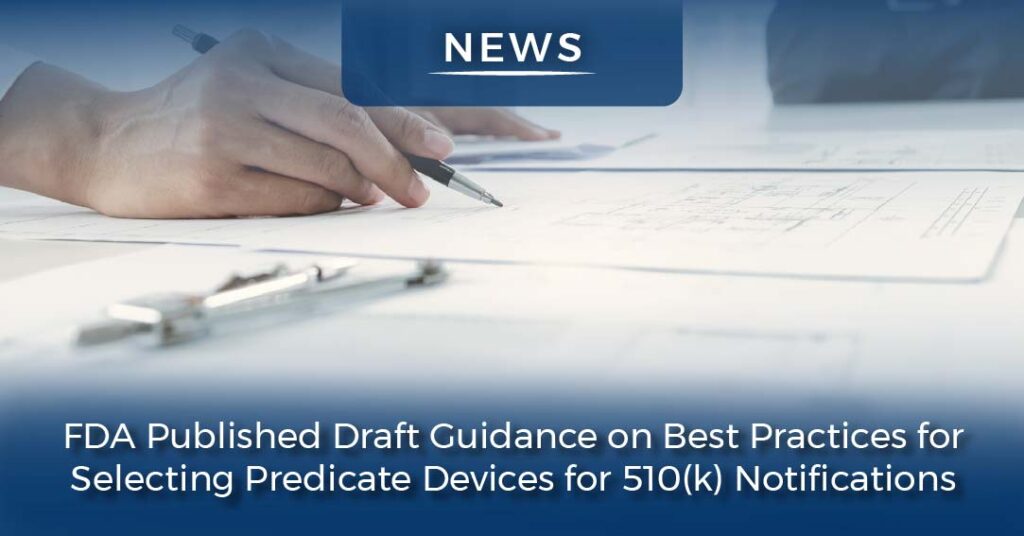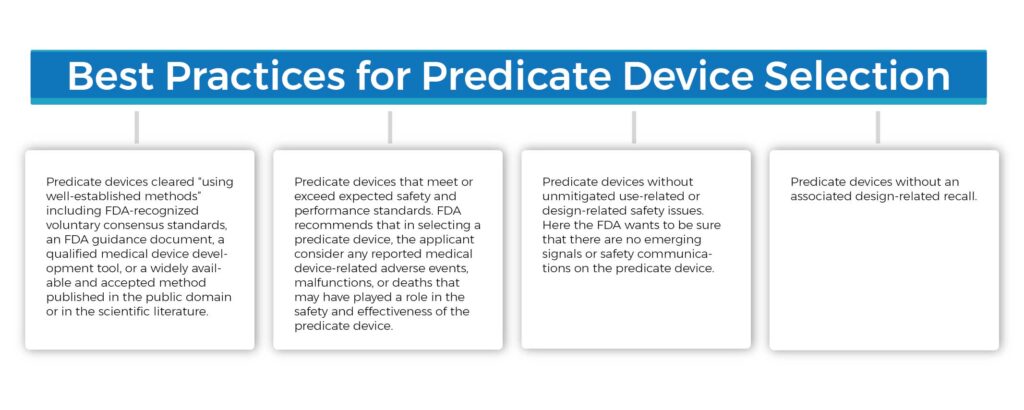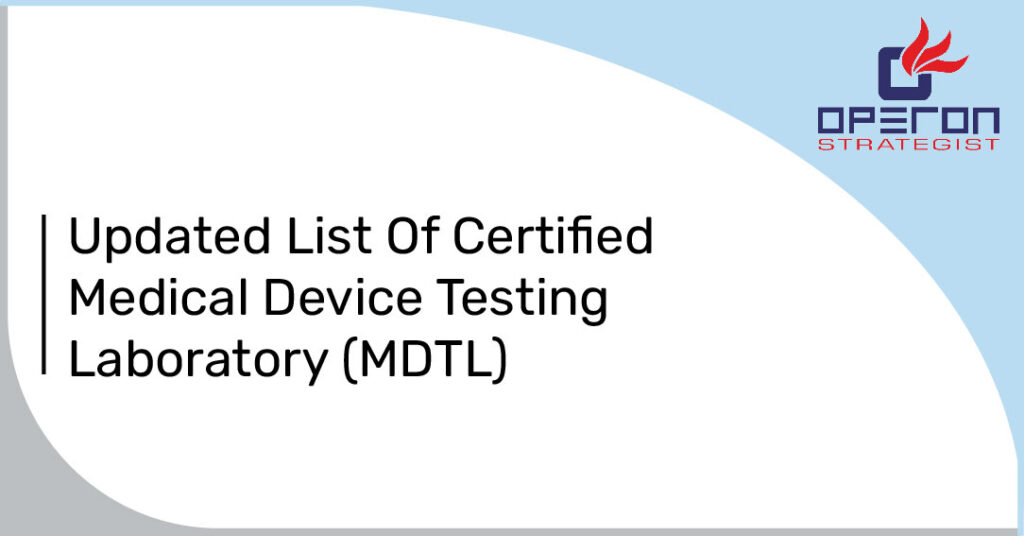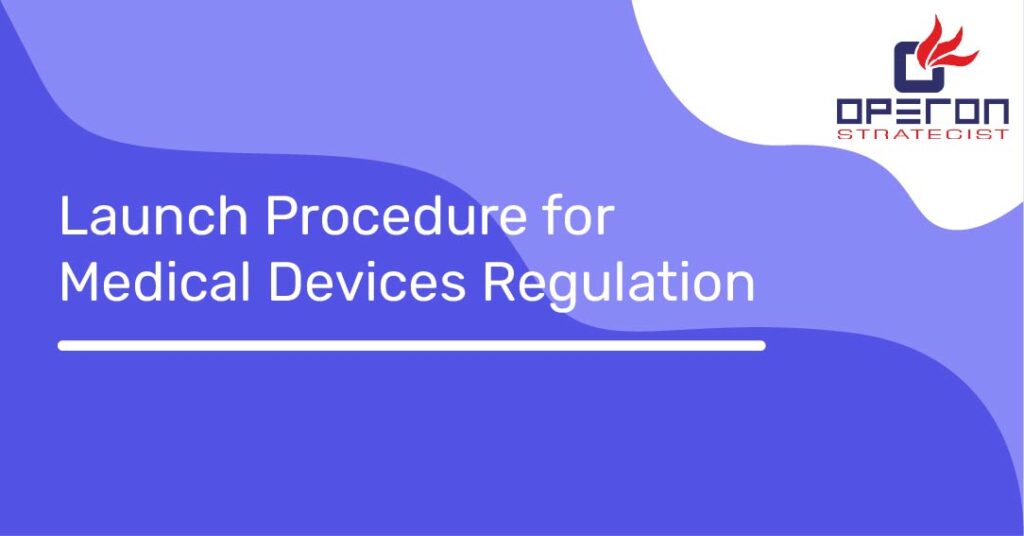Draft on Best Practices for Selecting Predicate Devices for FDA 510(k) Notification
On September 6, 2023, the US Food and Drug Administration (FDA) took a significant step towards enhancing and modernizing the 510(k) Program, aimed at providing greater predictability, consistency, and transparency in the 510(k) premarket review process. Specifically, the FDA released a set of three draft guidances, with a focus on improving the selection of predicate devices for 510(k) notifications.
Read our blog on 6 Tips to Use a Predicate Device Effortlessly
Looking for Medical Device Regulatory Consultation?
Let’s have a word about your next project
The new draft guidance outlines four “best practices” that should be followed when choosing a predicate device to support a 510(k) submission. Under existing regulations, manufacturers are required to submit a 510(k) notification at least 90 days before introducing their device into interstate commerce for commercial distribution. To gain FDA clearance, the proposed device must demonstrate substantial equivalence to a legally marketed “predicate device.”
Best Practices for Selecting a Predicate Device
In this updated guidance, the FDA emphasizes the importance of these four best practices in predicate device selection, encouraging applicants to detail how these practices were employed in their 510(k) notifications. Here is a concise overview of these best practices:
- Utilize Predicate Devices with Established Methods: Choose predicate devices that have been cleared using well-established methods, including FDA-recognized voluntary consensus standards, guidance documents, qualified medical device development tools, or widely accepted public domain or scientific literature references.
- Prioritize Safety and Performance: Select predicate devices that meet or exceed expected safety and performance standards. Take into account any reported adverse events, malfunctions, or deaths related to the predicate device.
- Mitigate Safety Issues: Ensure that the chosen predicate devices do not have unaddressed use-related or design-related safety concerns. The FDA wants to ensure there are no emerging safety signals or communications associated with the predicate device.
- Avoid Design-Related Recalls: Predicate devices should not have a history of design-related recalls, indicating potential issues in their design or functionality.
The guidance further offers recommendations on how to apply these best practices and provides illustrative examples using a new chart format to summarize assessments involving these practices.
Crucially, the FDA suggests that submitters incorporate a narrative explanation within their 510(k) Summaries, outlining their rationale for selecting the predicate device and detailing how they adhered to the best practices in making this selection. This added level of transparency is intended to enhance the overall integrity and reliability of the 510(k) premarket review process.
What We Offer as a Medical Device Regulatory Consultant?
Operon Strategist remains committed to guiding you through the evolving landscape of medical device regulations. With the FDA’s focus on enhancing the 510(k) Program, our expertise ensures your compliance and success in navigating these changes. Trust us to help you make informed decisions when selecting predicate devices, incorporating best practices, and delivering transparent 510(k) Summaries. Your success is our mission, and we stand ready to empower your journey in the medical device industry.






